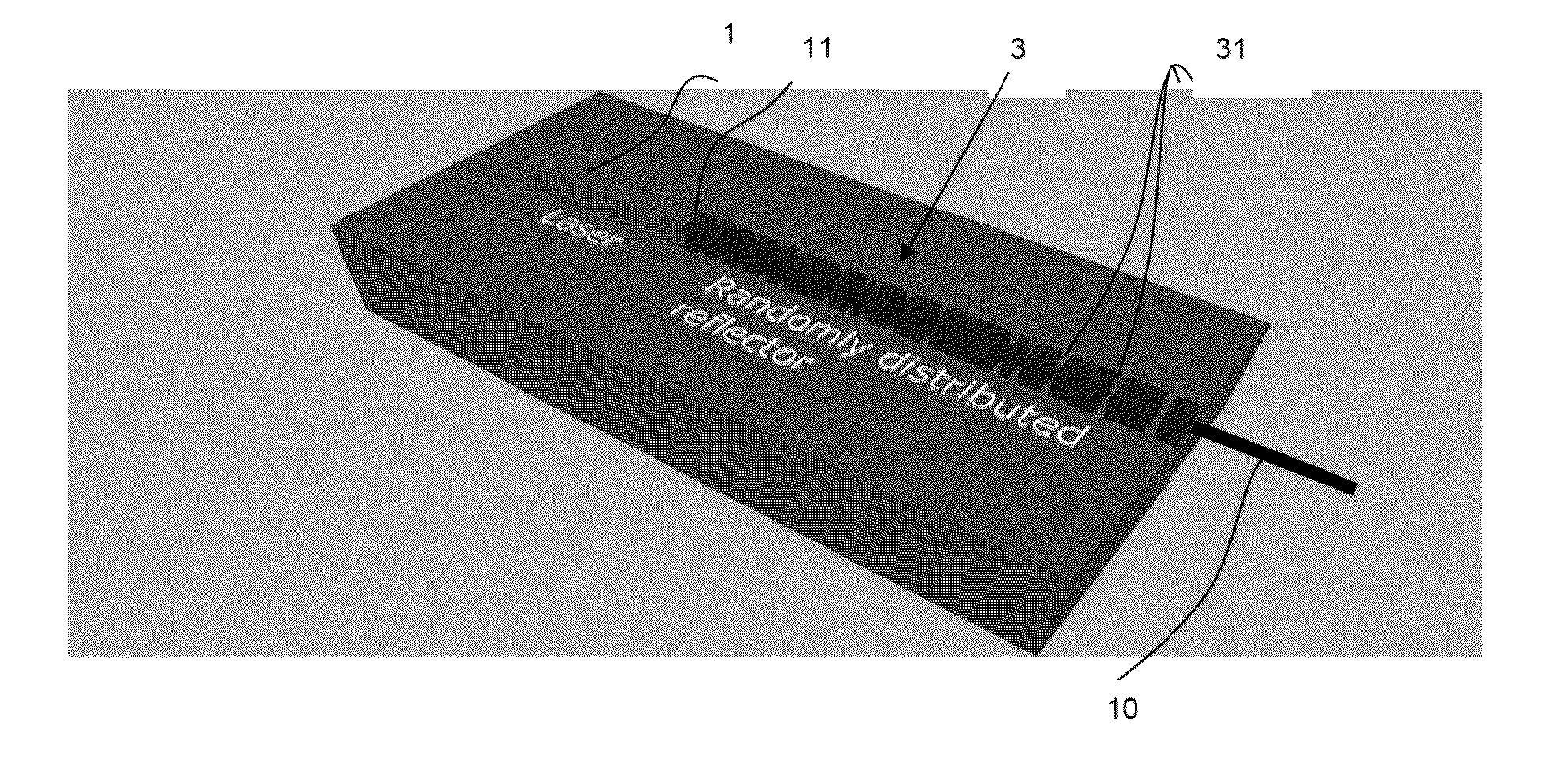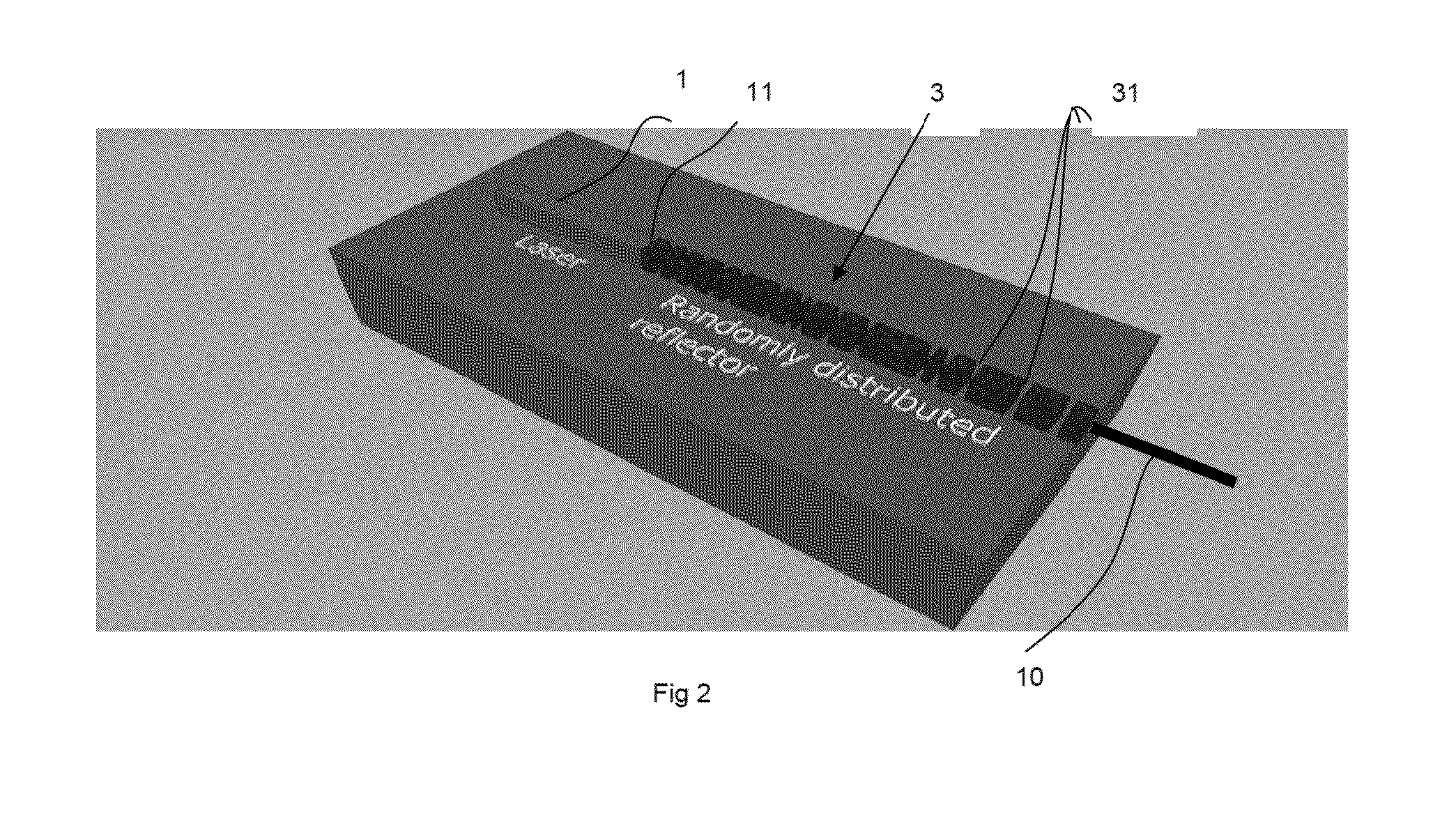Laser source with reduced linewidth
a laser source and linewidth technology, applied in the direction of laser details, semiconductor lasers, electrical devices, etc., can solve the problems of not always being able to obtain the requisite width in this way, undesirable for a large number of applications, and weak back-projection of rayleigh type, etc., to achieve strong reflection, reduce the linewidth, and reduce the laser linewidth
- Summary
- Abstract
- Description
- Claims
- Application Information
AI Technical Summary
Benefits of technology
Problems solved by technology
Method used
Image
Examples
first embodiment
[0022]An example of a laser device according to the invention will now be described as it relates to FIG. 2.
[0023]A laser source 1 is coupled with a single-mode waveguide 3 which is integrated monolithically with the laser source: they are both made from the same base material. This coupling between the laser source and the guide can be achieved using several methods, among which mention may be made of end-to-end coupling, and coupling by a mode-size adapter. Reflectors 31 are etched into the waveguide in the form of trenches randomly distributed along the waveguide. The trenches can all have the same length but not necessarily; the length of the trenches (considered along the direction of propagation of the laser 10) is between 50 and 500 nm. The base material is for example based on InP, GaAs or is a photonic integration platform combining a III-V material with silicon for example. In the latter case, it is a hybrid III-V laser source 1. The reflectors 31 are etched into the silic...
second embodiment
[0024]An example of a laser device according to the invention is shown in FIGS. 3a and 3b with two variants. According to this embodiment, the waveguide 3 is an optical fibre; the laser source 1 and the optical fibre 3 are produced separately, then coupled with each other by means of a coupling device 4. The reflectors 31 are produced in the optical fibre 3, for example by UV illumination through a mask in such a way as to locally modify the refractive index of the optical fibre and thus obtain localized reflectors, as is done in the manufacture of Bragg arrays. The patterns in the mask are randomly distributed in such a way as to obtain a random location of the reflectors along the optical fibre. The laser source can be a solid-state laser such as an erbium-doped fibre laser or a semiconductor laser.
[0025]The laser source and the optical fibre can be incorporated into one and the same housing; they are then coupled with each other, for example by means of a lens 32, as is the case ...
PUM
 Login to View More
Login to View More Abstract
Description
Claims
Application Information
 Login to View More
Login to View More - Generate Ideas
- Intellectual Property
- Life Sciences
- Materials
- Tech Scout
- Unparalleled Data Quality
- Higher Quality Content
- 60% Fewer Hallucinations
Browse by: Latest US Patents, China's latest patents, Technical Efficacy Thesaurus, Application Domain, Technology Topic, Popular Technical Reports.
© 2025 PatSnap. All rights reserved.Legal|Privacy policy|Modern Slavery Act Transparency Statement|Sitemap|About US| Contact US: help@patsnap.com



